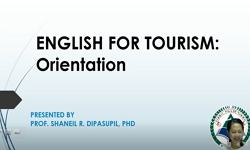본 연구는 일제하 식민지 조선과 ‘만주’ 지역에서 전개된 철도관광을 대상으로 ‘식민지 투어리즘’(colonial tourism)의 역사적 성격을 분석하는 것을 목적으로 한다. 일반적으로 제국주의 ...
http://chineseinput.net/에서 pinyin(병음)방식으로 중국어를 변환할 수 있습니다.
변환된 중국어를 복사하여 사용하시면 됩니다.
- 中文 을 입력하시려면 zhongwen을 입력하시고 space를누르시면됩니다.
- 北京 을 입력하시려면 beijing을 입력하시고 space를 누르시면 됩니다.
철도제국주의와 관광식민주의: 식민지제국 일본의 영역성의 사회문화적 변동
한글로보기https://www.riss.kr/link?id=G3736714
- 저자
-
발행기관
-
-
발행연도
2012년
-
작성언어
Korean
-
주제어
철도제국주의 ; tourist culture ; colonial tourism ; railway imperialism ; tourism ; imperialism ; colonialism ; local identity ; locality ; assimilationism ; Occidentalism ; Orientalism ; racism ; imaginative geography ; travel literature ; railway station architecture ; colonial modernity ; the Grea ; 관광식민주의 ; 제국주의 ; 식민주의 ; 제국 일본 ; 식민지 조선 ; 식민지 관광 ; 식민지 투어리즘 ; 조선관광 ; 만주관광 ; 조선철도 ; 만철 ; 북선루트 ; 철도관광 ; 영역성 ; 식민지의 재현 ; 풍경으로서의 식민지
-
자료형태
한국연구재단(NRF)
-
0
상세조회 -
0
다운로드
부가정보
국문 초록 (Abstract)
본 연구는 이러한 문제의식하에 제국 일본의 철도관광의 전개 양상을 구체적으로 분석한 결과, 일제하 조선-만주 철도관광이 ‘만철루트’ ‘조선루트’ ‘북선루트’의 세 가지 경로를 통해 이루어졌음을 알 수 있었다. 본 연구에서는 이들 세 가지 경로의 시기별 추이와 지역별 차이를 염두에 두면서 당시 일본에서 발행한 조선-만주 관광 가이드북을 주요 자료로 하여 제국 일본의 철도네트워크와 식민지 관광문화의 확산, 관광식민주의를 통한 식민지의 재현, 제국의 공간표상과 풍경으로서의 식민지 등 세 가지 테마를 중심으로 연구를 진행하였다. 이를 통해 제국 일본이 형상화해낸 ‘식민지제국의 표상’을 분석함으로써 제국 일본이 만들어내고자 한 해외 영토에 대한 문화적 표상의 내용 및 성격과, 그것이 식민지 조선과 만주에 미친 사회문화적 영향력과 파급력의 시기별·지역별 차이를 규명해냈다.
본 연구는 일제하 식민지 조선과 ‘만주’ 지역에서 전개된 철도관광을 대상으로 ‘식민지 투어리즘’(colonial tourism)의 역사적 성격을 분석하는 것을 목적으로 한다. 일반적으로 제국주의 국가는 철도네트워크를 통해 내륙 식민지에 침투하는데, 식민지 철도는 군사적·경제적 기능을 최우선으로 부설되지만, 중장기적 관점에서는 그 사회적·문화적 기능 또한 간과할 수 없다. 특히 철도네트워크를 활용한 식민지 투어리즘은 철도를 통한 식민지 영토의 일차적·물리적 통합과 형식적·공간적 포섭을 이차적·문화적 통합과 실질적·장소적 포섭으로 전환함으로써 식민지제국의 영토적 안정성을 도모하는 촉매제 역할을 수행한다.
본 연구는 이러한 문제의식하에 제국 일본의 철도관광의 전개 양상을 구체적으로 분석한 결과, 일제하 조선-만주 철도관광이 ‘만철루트’ ‘조선루트’ ‘북선루트’의 세 가지 경로를 통해 이루어졌음을 알 수 있었다. 본 연구에서는 이들 세 가지 경로의 시기별 추이와 지역별 차이를 염두에 두면서 당시 일본에서 발행한 조선-만주 관광 가이드북을 주요 자료로 하여 제국 일본의 철도네트워크와 식민지 관광문화의 확산, 관광식민주의를 통한 식민지의 재현, 제국의 공간표상과 풍경으로서의 식민지 등 세 가지 테마를 중심으로 연구를 진행하였다. 이를 통해 제국 일본이 형상화해낸 ‘식민지제국의 표상’을 분석함으로써 제국 일본이 만들어내고자 한 해외 영토에 대한 문화적 표상의 내용 및 성격과, 그것이 식민지 조선과 만주에 미친 사회문화적 영향력과 파급력의 시기별·지역별 차이를 규명해냈다.
다국어 초록 (Multilingual Abstract)
The aim of this study is the historical analysis of the socio-cultural dynamics of Japanese colonial tourism in relation to the Japanese railway imperialism. Japanese Empire laid the colonial railways in Korea and Manchuria. Colonial railway tourism w...
The aim of this study is the historical analysis of the socio-cultural dynamics of Japanese colonial tourism in relation to the Japanese railway imperialism. Japanese Empire laid the colonial railways in Korea and Manchuria. Colonial railway tourism was carried out along this railways. This colonial railways can be divided into three route, ‘Mantetu route’, ‘Chosen route’, and ‘Hokusen(North Chosen) route.’ In this study, the social process of the production and consumption of the tourist guidebooks about this three route were mainly analyzed in comparative historical point of view, focusing on three main research topics, as follows: (1) the spatial expansion of the Japanese imperial railway networks and the colonial tourism, (2) comparative historical analyses of the change of the Japanese people's way of imaging colonies expressed in the process of colonial tourism, (3) discursive analyses of the visual and textual materials in tourist guidebooks representing the territories of Japanese Empire and colonies as specific places which include various historical/sacred meanings or natural/civilized landscapes.









